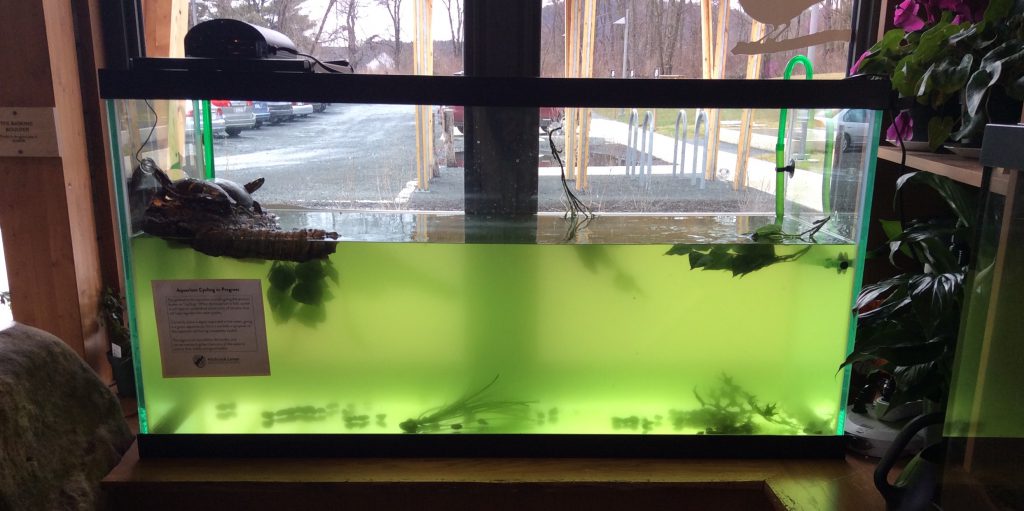Recently we unexpectedly received two painted turtles at the Hitchcock Center. They were surrendered to us by someone that couldn’t give them the care they needed anymore. I’m not entirely sure if they were captive bred or taken from the wild, but based on their behavior it is clear that they’ve been pets for a good portion of their life.
Painted turtles only recently became legal to sell and own without a permit in Massachusetts. From the MA Department of Fisheries and Wildlife on Mass.gov (MA DFW Turtles FAQ):
“All but three species of turtles in Massachusetts (Eastern Painted Turtle, Stinkpot, and Common Snapping Turtle) are protected and can not be captured and kept. It is illegal to possess a Spotted Turtle. All other turtles require a permit to possess live or dead individuals (including shells).”
Turtles are one of the more threatened groups of animals in MA. It is NEVER a good idea to take turtles from the wild for any reason. Removing turtles from a local population means they will never reproduce to help sustain that population, and this can eventually lead to the that population disappearing. In upcoming posts I’ll write more about the turtles themselves, including the work I’m doing to modify their enclosure to best support their physical and behavioral health and why they can’t be released to the wild. For now, I’d like to address one very noticeable feature of their enclosure: the green water!

The new painted turtle aquarium. The green water isn’t harmful to the turtles, and should clear up as the aquarium cycles.
Just like the native freshwater fish aquarium the painted turtle aquarium needs to “cycle.” When cycling is complete the ammonia, nitrite, and nitrate that result from turtle waste and uneaten food breaking down in the water will be reduced to minimal levels. A necessary part of this process is the establishment of a “biofilter,” which is a community of bacteria that processes these compounds. The external canister filter that cleans the aquarium water has filtration media designed to support the growth of the biofilter, in addition to several types of mechanical filtration media. Another important area for the biofilter to grow is the aquarium substrate. Once the substrate is in place it will still take several weeks for the biofilter to grow and for the aquarium to fully cycle. For more detail on cycling process and the friendly bacteria involved, see my post about cycling the freshwater fish aquarium.
The ammonia, nitrite and nitrate that accumulate in the water all negatively affect the water quality and have the potential to be harmful to animals living in an aquarium. The major difference between the freshwater fish aquarium and the painted turtle aquarium is that the fish are much more negatively affected by the presence of these compounds, due to the fact that their bodies are intimately interacting with the water via their gills. I will be performing water changes, i. e. replacing 30% to 50% of the aquarium water, to control the levels of the harmful compound while the cycling is in process and the biofilter is being established.
So what does all this have to do with the green water? The green is likely from algae that is suspended in the water. The algae itself is not harmful to the turtles, and is partly a symptom of the aquarium water not having cycled yet. I will write more in future posts about all the variables involved in the algae growth and what I am doing to control it, but in the meantime know that the green water is all part of the normal growing pains of a new turtle aquarium.
Thanks for tuning in,
Patrick O’Roark
Educator, Live Animal Caretaker
Share this page with friends!
I have a pond (indoor) with a painted and a yellow bellied slider. I have been trying to research what the best pH and nitrate levels would be for them, but am not having much species specific luck finding those answers. What should I be shooting for?